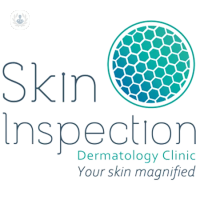Cosmetic dermatology
Dr Raj Mallipeddi - Dermatology
Created on: 02-20-2013
Updated on: 03-24-2023
Edited by: Conor Lynch
What is cosmetic dermatology?
Cosmetic dermatology (or aesthetic medicine) is a specialised field of dermatology that focuses on improving the skin on the face and neck for cosmetic purposes rather than for treating a medical condition. It can have a huge impact on a person's mental wellbeing and confidence. Procedures such as Botox, dermal fillers, skin peels, and laser hair removal are examples of cosmetic dermatological procedures.

What can cosmetic dermatology help to improve the appearance of?
A cosmetic dermatological procedure can be used to improve the appearance of:
- wrinkles
- premature ageing
- fine lines
- skin pigmentation
- scars
- moles and other lesions
What are the commonest procedures?
Procedures used in cosmetic dermatology include:
- BOTOX® injections - the most popular procedure, which is a lot cheaper and quicker than surgery to improve skin tone
- Dermal fillers (hyaluronic acid) - can give fuller lips and plumper, softer skin
- Microdermabrasion - rejuvenates the skin, especially where there is scarring, stretch marks, or sun damage
- Chemical peels - can improve skin tone and texture, especially for acne scars and freckles
- Laser hair removal - to remove excessive fine hairs
Why might some women choose to have cosmetic dermatology?
Each patient has their own aesthetic concern that they need to discuss with their dermatologist or aesthetic medicine specialist. Some might want to slow down and/or prevent premature ageing or improve the suppleness of sagging skin. Others might want to decrease the visibility of scars from trauma or to remove moles from their face, neck, and/or chest.
What are the main risks associated with cosmetic dermatology?
Some of the most commonly reported side effects or complications following cosmetic dermatology procedures include:
- bruising
- swelling
- scarring
- infection
- burns to the skin
- changes in skin pigmentation
- nerve damage resulting in partial sensory loss








